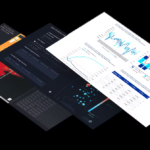Modular, 4 units training on AI in Investment and Portfolio Management
Module 1: Introduction to Data Science and AI
Using ubiquitous data efficiently and effectively requires a data-driven mindset and expertise in best practices. The first module in the 4-step training on AI in Investment and Portfolio Management is about showcasing and exercising “data thinking” for me as an investment manager.
Questions answered in this module:
- How are banks in general / investment management in particular affected by data and AI, what are the Others doing?
- What is a typical (data) value chain in investment management, where is it about to change and where to stay constant?
- Why is data thinking special and required? How can I benefit in my work from thinking in a data-driven way?
- Beyond Bloomberg: How can the wealth of new financial data sources be accessed in an ad-hoc but sustainable manner?
- Why is most of the work going into cleaning and arranging data and how can I improve the situation?
- Data modelling and AI: what are typical results and how can I develop a feeling for the robustness and context of algorithmic outcomes?
Exercises and case studies for the participants:
Describe how you are working with data today and what are recurrent patterns in the work flow
Where would you see automation potential in your work flow and why is it not already implemented?
Using open and interoperable data formats versus proprietary systems: pros and cons


Module 2: Data Science and AI in Investment Research
From research to reporting, data and algorithms have many value-creating applications in the investment management process. This module is focused on the use of AI to greatly support information extraction, reporting and similar tasks.
Questions answered in this module:
- How does AI make investment research from written reports, websites etc. much more efficient?
- Why is anomaly detection the most generic method to create value in most investment research cases? How can I start from that spot and tune anomaly detection to my use case?
- How can AI support content generation, e.g. for reporting purposes?
Exercises and case studies for the participants:
Can you identify use cases for conversational AI (e.g., Alexa, Siri) in investment management?
Look into Deutsche Bank’s AI stock picker which screens through ESG reports to validate ESG factors of companies
Look into RegDelta, which automates processes to identify new regulatory obligations and manage the required change efficiently and effectively
Module 3: Data Science and AI in Investment Decision Making
If employed wisely, data and algorithms can help creating investment portfolios with better risk/return ratio than without technology support. This module is about working on areas that are particularly suited for AI supported investment decision making.
Questions answered in this module:
- How does financial forecasting work and where are the limits?
- Where can AI, through the power of finding patterns autonomously, add value to portfolio risk management, forecasting, and finally, making investment decisions?
- Is data or the algorithm the more important component in AI? How can an improvement in one compensate deficiencies of the other?
- Can data and algorithms from vendors be valuated and quality assured?
- How relevant are “exotic” data sources, such as emotional states from text, IoT data and more?
- How does regulation react on the growing potential of algorithmic decision making in investment management?
Exercises and case studies for the participants:
How do you already employ data and algorithms in supporting your investment decisions?
Look into Exo, an automated investment platform
What top use case would you really like to be dealt with by an AI and how would you go for implementing it?


Module 4: Python for Investment Managers
Python is the go-to language for data-tasks today, not only as stand-alone programming tool but also integrated into many software tools. This module is structured to make participants aware of the tools and kickstart your own way forward in employing the tools.
Questions answered in this module:
- What investment-relevant tasks can be automated with Python?
- How can I get access to tools?
- How can I integrate Python into my existing software to solve more complex problems and still build on known foundations?
Exercises and case studies for the participants:
Select a proposed Use Case or default to Portfolio Theory exercise
Implement Use Case in pure Python
Evaluate pros and cons of Python compared to Excel based analytics
Does that sound interesting?
We are happy to receive your inquiry:



